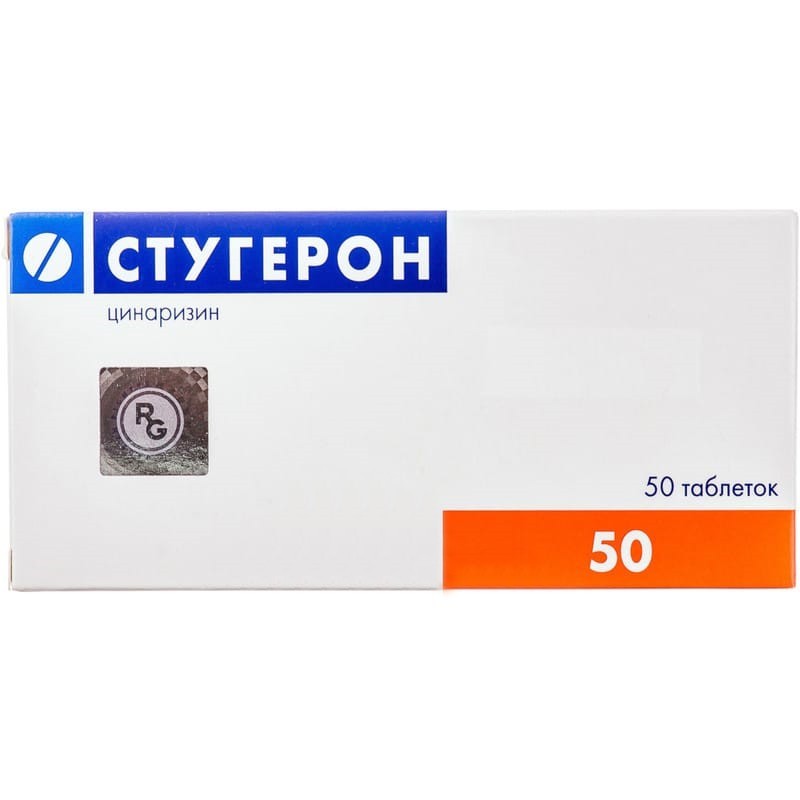



 Secure and encrypted payment processing
Secure and encrypted payment processing We ship to over 40 countries including the USA, UK, Europe, Australia and Japan
We ship to over 40 countries including the USA, UK, Europe, Australia and Japan Guaranteed refund or reship if you haven't received your order
Guaranteed refund or reship if you haven't received your orderCinnarizine inhibits the contraction of vascular smooth muscle cells by blocking calcium channels. in addition to direct calcium antagonism, cinnarizine reduces the severity of the contractile action of vasoactive substances such as norepinephrine and serotonin, blocking receptor-mediated calcium channels. blockade of calcium intake into cells is selective with respect to tissues and leads to a decrease in vasoconstriction without affecting hell and heart rate.
Cinnarizine can further improve insufficient microcirculation, increasing the ability of red blood cells to deform and reducing blood viscosity. When it is taken, cellular resistance to hypoxia increases.
Cinnarizine inhibits the stimulation of the vestibular system, which leads to suppression of nystagmus, and other autonomic disorders. With the help of cinnarizine, the severity of acute attacks of dizziness can be prevented or reduced.
Pharmacokinetics
Absorption. The maximum levels of cinnarizine in blood plasma are achieved 1-3 hours after oral administration.
Distribution. Plasma protein binding is 91%.
Metabolism. Cinnarizine is metabolized by CYP 2D6.
T½ from blood plasma is from 4 to 24 hours. 1/3 metabolites are carried out with urine and ⅔ - with feces.
Cerebrovascular accident:
Peripheral circulatory disorders:
Imbalance:
Motion sickness:
Cerebrovascular accident
Adults and children over the age of 12 years: 1 tablet 3 times a day.
Peripheral circulatory disorders
Adults and children over the age of 12 years: 2-3 tablets 3 times a day. The maximum dose should not exceed 225 mg (9 tablets) per day. Since the effect of dizziness depends on the dose, the dose should be gradually increased.
Imbalance
Adults and children over the age of 12 years: 1 tablet 3 times a day.
Motion sickness
Mode of application
For oral use. Preference should be given to taking Stugeron after a meal.
Hypersensitivity to the active substance or any of the auxiliary components of the drug.
Drowsiness and gastrointestinal disturbances may occur. usually these symptoms are temporary and disappear with the gradual achievement of the optimal dose. symptoms such as headache, dry mouth, weight gain, sweating, or allergic reactions rarely occur. in very rare cases, Wilsons lichen and lupus-like symptoms have been reported.
In the medical literature, a special case of obstructive jaundice is mentioned. In elderly patients with prolonged treatment, cases of increased or the appearance of extrapyramidal symptoms were observed, sometimes in combination with depressive states. In such cases, the use of this tool should be discontinued.
Given the above adverse reactions, the following adverse reactions were observed with the use of the drug Stugeron in clinical trials and in the post-marketing period. Frequency is defined as: very often (≥1 / 10); often (≥1 / 100 to 1/10); infrequently (≥1 / 1000 to 1/100); rarely (≥1 / 10,000 to 1/1000); very rarely (1/10 000), the frequency is unknown (cannot be estimated from the available data).
| From the nervous system | |
| Often | Drowsiness |
| Infrequently | Hypersomnia, lethargy |
| Frequency unknown | Dyskinesia, extrapyramidal disorders, parkinsonism, tremor |
| From the gastrointestinal tract | |
| Often | Nausea, dyspepsia |
| Infrequently | Discomfort in the stomach, vomiting, pain in the upper abdomen |
| On the part of the liver and biliary tract | |
| Frequency unknown | Cholestatic jaundice |
| On the part of the skin and subcutaneous fat | |
| Infrequently | Hyperhidrosis, lichen-like keratosis, including lichen planus |
| Frequency unknown | Subacute cutaneous lupus erythematosus |
| On the part of muscle and connective tissue | |
| Frequency unknown | Muscle stiffness |
| General disorders and violations at the injection site | |
| Infrequently | Fatigue |
| Laboratory indicators | |
| Often | Weight gain |
In addition, cases of hypersensitivity reactions were reported.